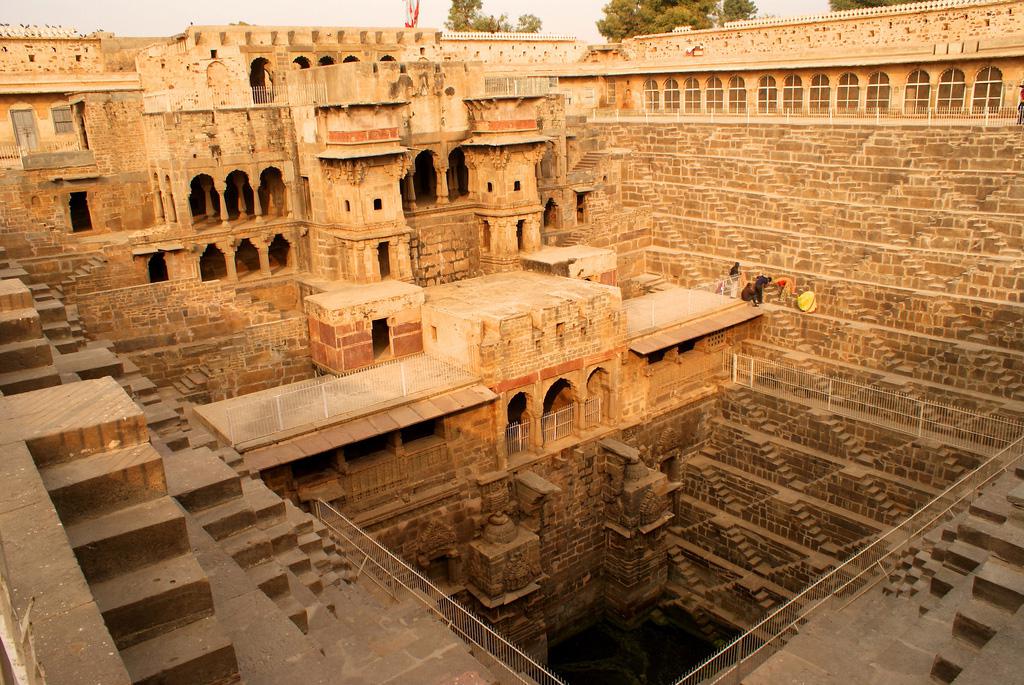In 1864, the famous French world traveler Louis Rousselet described “[a] vast sheet of water, covered with lotuses in flower, amid which thousands of aquatic birds are sporting …” at the shores of which bathers washed, surrounded by jungle greenery. He was not describing a lakeside scene but an ancient well.
In the northern Indian states of Rajasthan and Gujarat, the problem of water is a profound one. At the edge of the Thar desert, the area sees torrential seasonal monsoons but watches as the water quickly disappears into the sandy soil and into the air on days that routinely reach over 100 degrees, a practical solution for for holding onto water was badly needed.
Known as baori, stepwells were tiered carved stone structures used to collect and store rainwater in arid climates. Often accented with arches, columns, sculptures, and geometric patterns, stepwells also served as village gathering places.
The earliest stepwells date to around 550 A.D., but the most famous of them were built in medieval times. It is estimated that more than 3,000 stepwells were built in the two northern states. Although many have fallen into disrepair and have been filled in with trash in the modern era, hundreds of wells still exist. In New Delhi alone, there are more than 30.
Built in the ninth century but reminiscent of an Escher drawing, Chand Baori is among the largest and most elaborate of India’s many stepwells. The four-sided Chand Baori is 13 stories tall, 100 feet deep, and lined with 3,500 steps arranged in a spectacular zig-zag pattern. On one side of the well is a temple dedicated to the Hindu goddess Harsiddhi. Its intricate, multilevel facade overlooks a small pond of bright green water: a reminder of the magnificent structure’s practical purpose. The construction dates to the 10th century and is dedicated to Harshat Mata, goddess of joy and happiness.
The use and conditions of stepwells began to decline in the years of the British Raj, who were horrified by the unsanitary conditions of these drinking water bathing spots. They began to install pumps and pipes, and eventually outlawed the use of stepwells in some places.
The remaining stepwells are in varying states of preservation, and many have gone dry. Local kids find the ones with water to be excellent diving spots.
